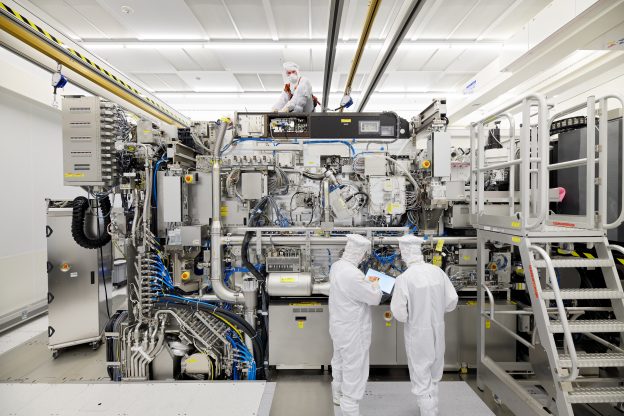
News

As the semiconductor industry continues to advance, it has sparked an arms race among Samsung, Intel, and TSMC in acquiring extreme ultraviolet (EUV) equipment. When asked about when TSMC would adopt the extremely expensive High Numerical Aperture EUV (High-NA EUV) lithography equipment, as per a report from Economic Daily News, TSMC’s Senior Vice President of Business Development and Global Sales at TSMC, Kevin Zhang, also revealed his insight regarding the matter in an interview.
Reportedly, High-NA EUV machines are priced as high as USD 380 million each, more than double the cost of regular EUV machines. Samsung and Intel have already invested heavily, purchasing several High-NA EUV machines ahead of TSMC, hoping to gain a competitive edge through more advanced equipment.
Industry sources cited by the report point out that Kevin Zhang did not reveal the exact timeline for TSMC’s purchase of High-NA EUV, indicating that TSMC is confident and will not blindly expand its procurement just because competitors have made early purchases. Instead, TSMC will continue to strategically plan its advanced manufacturing processes, steadily preparing to meet upcoming challenges.
Youtube channel TechTechPotato recently uploaded a 29-minute interview with Kevin Zhang. During the interview, Zhang emphasized that TSMC was the very first in terms of bringing EUV into high-volume manufacturing as early as the 7nm generation.
Zhang pointed out that TSMC currently leads in the usage, mass production, and production efficiency of EUV technology. Zhang also mentioned that scalability and manufacturing costs are significant factors to consider. He believes that TSMC’s R&D team will make the best decision regarding when and where to apply the next generation of EUV technology.
Notably, according to a report from The Chosun Daily, it pointed out that TSMC was expected to maximize the capabilities of its existing EUV equipment and utilize them through multi-patterning techniques. Simultaneously, the company was also evaluating the scale at which additional equipment may be introduced.
Read more
(Photo credit: ASML)